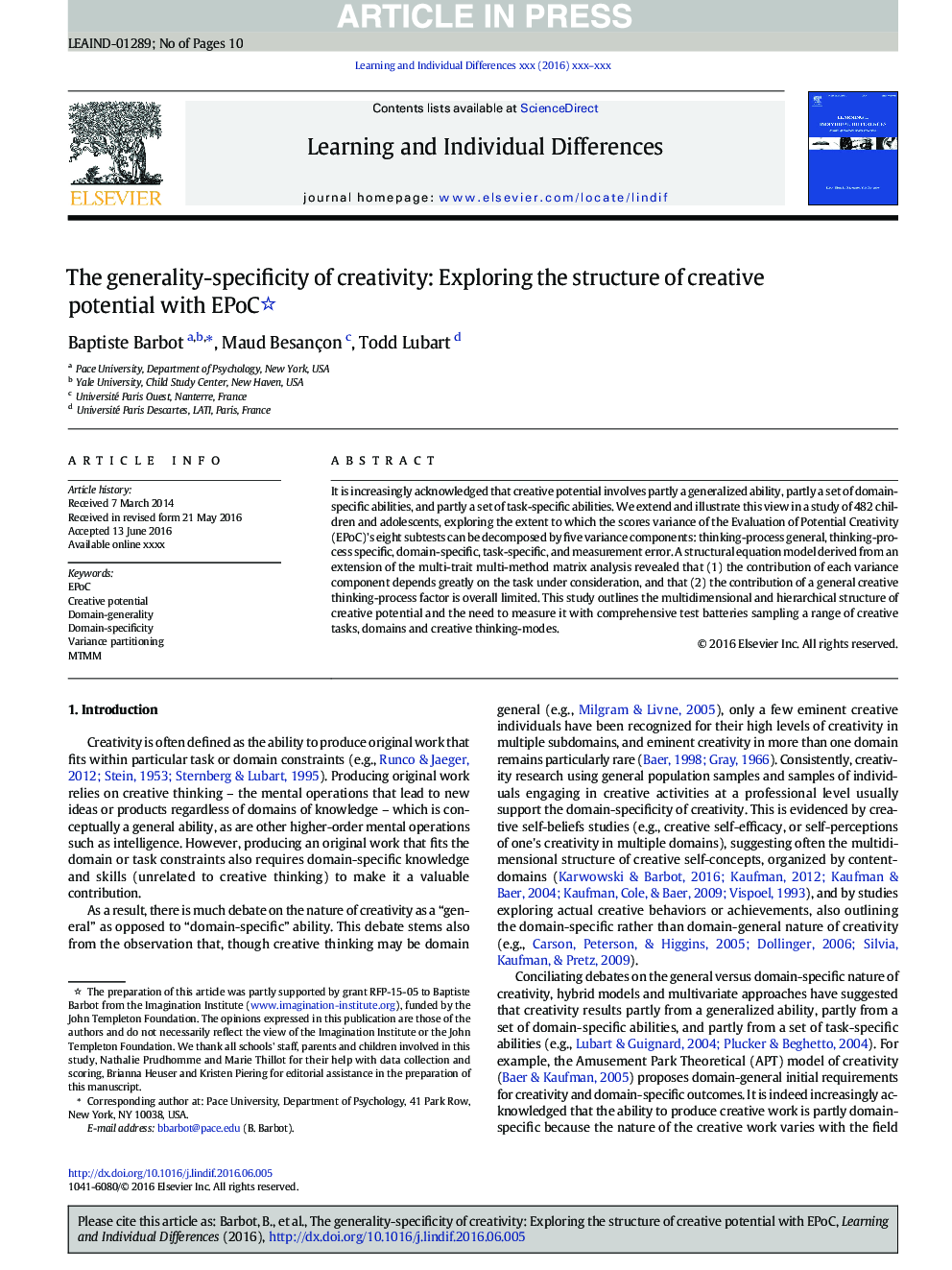| Article ID | Journal | Published Year | Pages | File Type |
|---|---|---|---|---|
| 4940083 | Learning and Individual Differences | 2016 | 10 Pages |
Abstract
It is increasingly acknowledged that creative potential involves partly a generalized ability, partly a set of domain-specific abilities, and partly a set of task-specific abilities. We extend and illustrate this view in a study of 482 children and adolescents, exploring the extent to which the scores variance of the Evaluation of Potential Creativity (EPoC)'s eight subtests can be decomposed by five variance components: thinking-process general, thinking-process specific, domain-specific, task-specific, and measurement error. A structural equation model derived from an extension of the multi-trait multi-method matrix analysis revealed that (1) the contribution of each variance component depends greatly on the task under consideration, and that (2) the contribution of a general creative thinking-process factor is overall limited. This study outlines the multidimensional and hierarchical structure of creative potential and the need to measure it with comprehensive test batteries sampling a range of creative tasks, domains and creative thinking-modes.
Related Topics
Social Sciences and Humanities
Psychology
Developmental and Educational Psychology
Authors
Baptiste Barbot, Maud Besançon, Todd Lubart,
